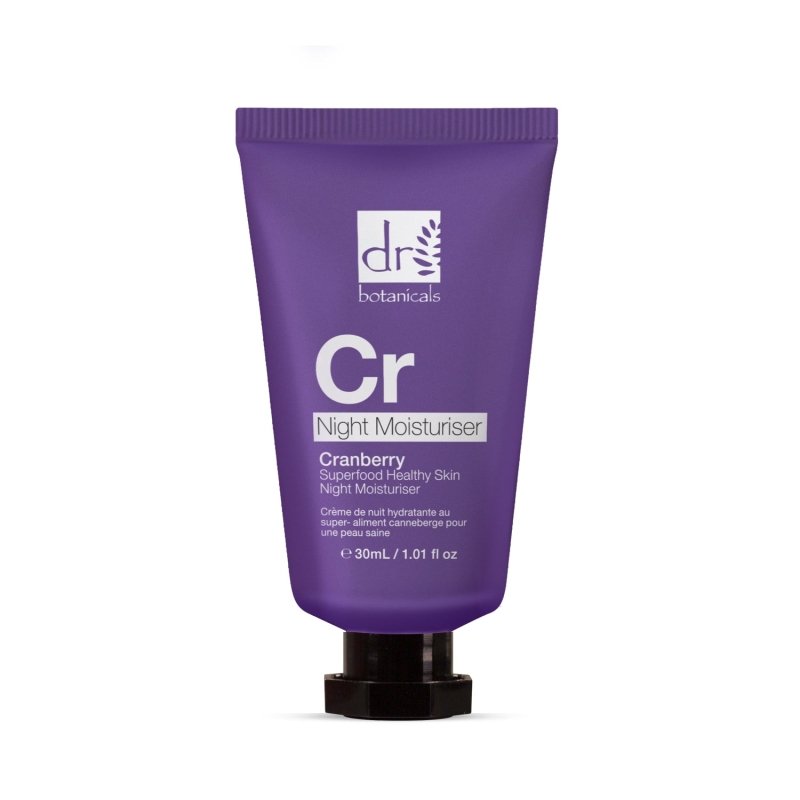
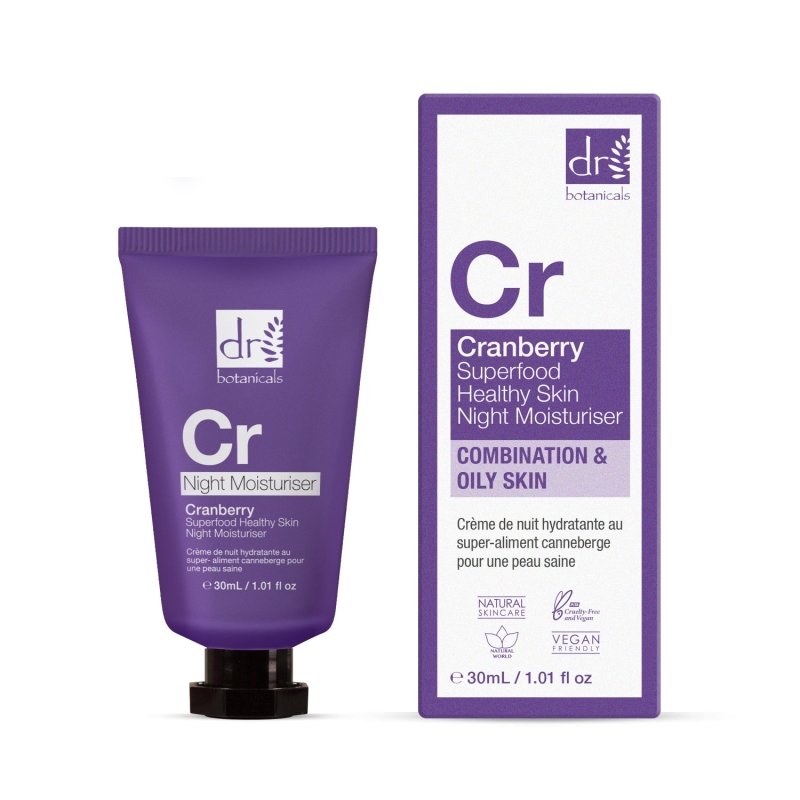
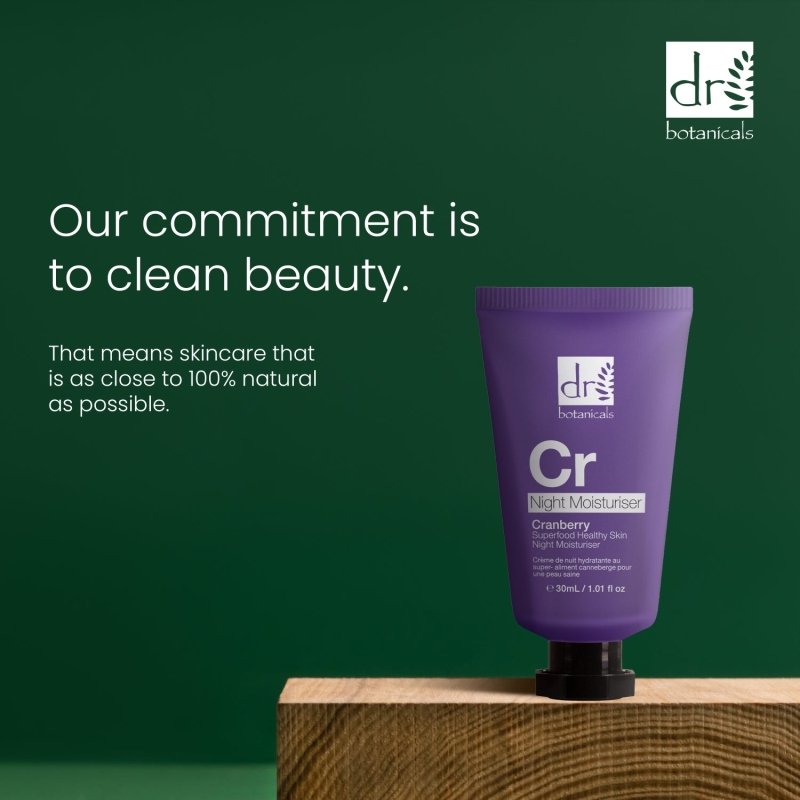
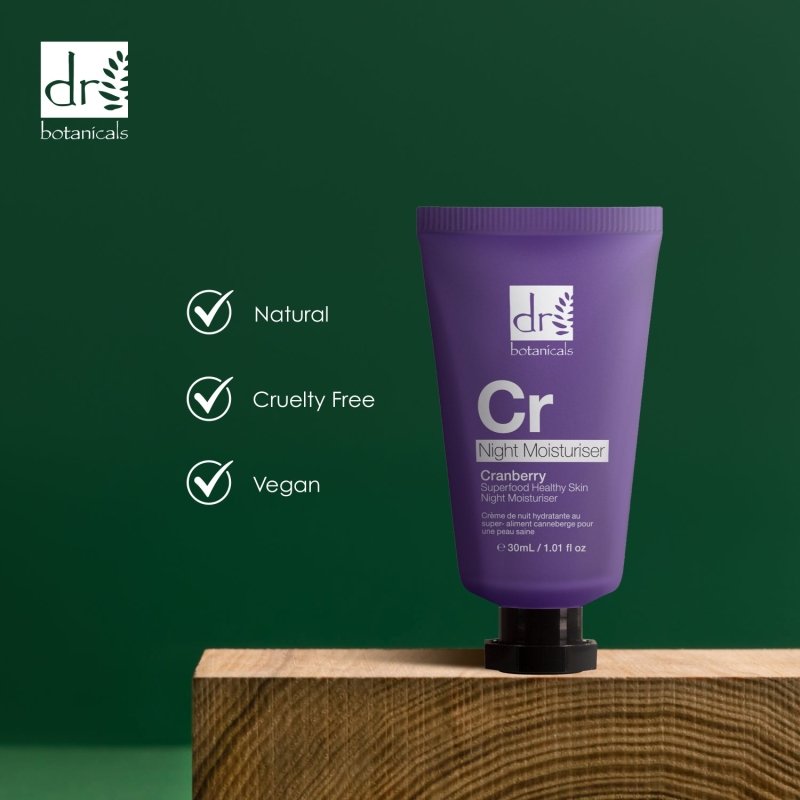
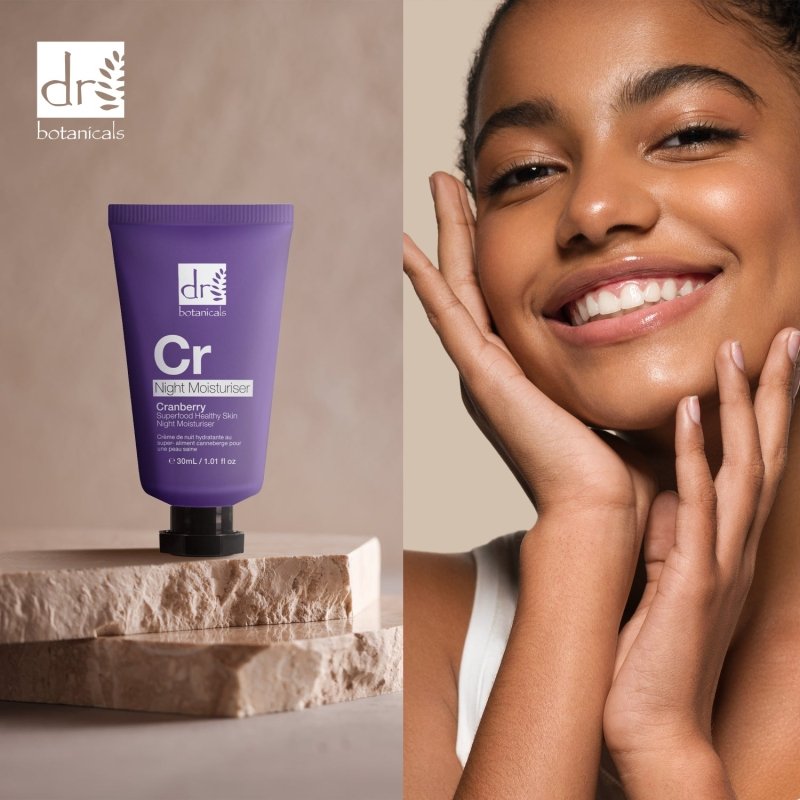
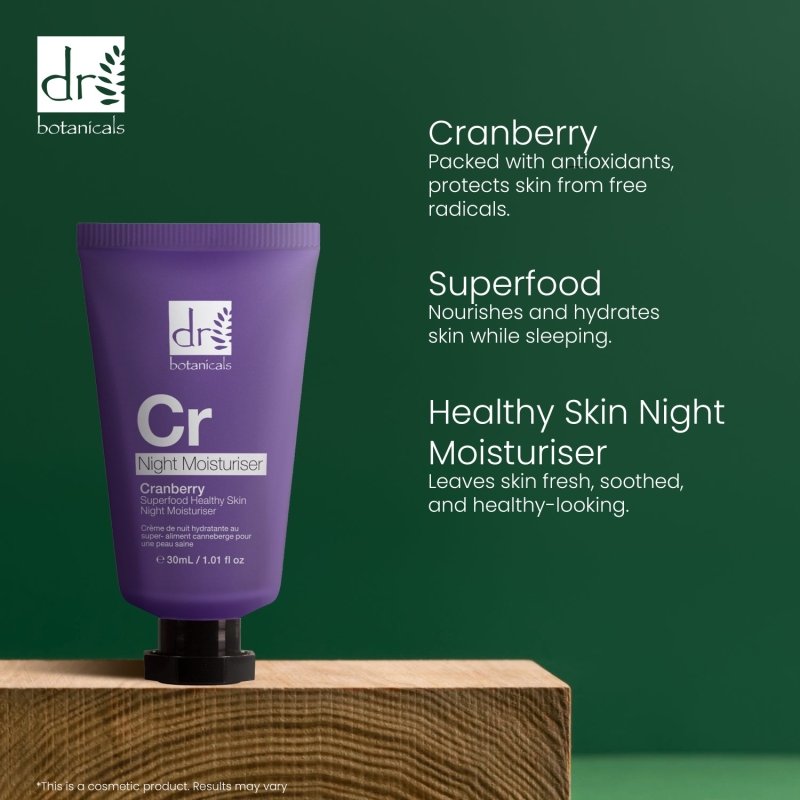
Cranberry Superfood Healthy Skin Night Moisturiser 30ml
- 98.4% natural, vegan, and cruelty-free formula
- Packed with antioxidants and vitamins for skin protection
- Suitable for all skin types, leaving you with fresh and healthy-looking skin
Our Cranberry Superfood Healthy Skin Night Moisturiser is a 98.4% natural, vegan, and cruelty-free formula that nourishes and hydrates your skin while you sleep. Packed with antioxidants and vitamins, it protects your skin from free radicals, leaving you with fresh, soothed, and healthy-looking skin. Suitable for all skin types, this night moisturiser is the ultimate treat for your face.
Choose options






🌱 DR BOTANICALS
LOVE YOUR SKIN, LOVE LUXURY.

Science-Backed Vegan Formulas
made with you in mind
Treating your skin means starting an adventure to feel your best. We've got skincare goodies just for you, packed with ingredients that science buffs would approve. Our products are totally vegan and steer clear of fake nasties. Get ready to pamper your skin with a focus on keeping it simple and pure, for a fab and glowing complexion!

